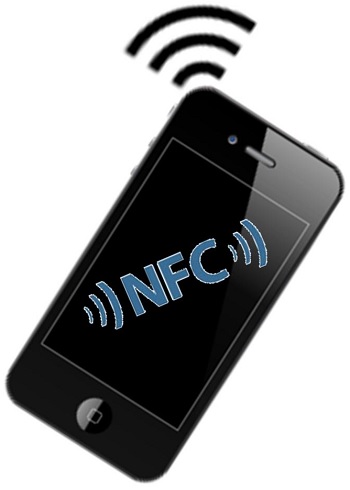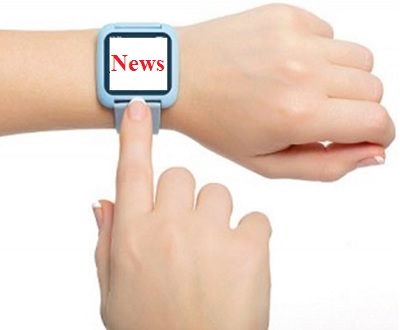Lucy |
September 19, 2014
NFC-enabled iPhone 6 will only work with the Apple Pay platform
Apple has some bad news about the iPhone 6 and Apple Pay. The famed technology company recently revealed its new device and mobile payments service, both of which have been well received by consumers. The iPhone 6 garnered praise for its inclusion of NFC technology, something that iOS users have been wanting for some time. The NFC-enabled iPhone will allow consumers to make use of a variety of mobile commerce platforms, or would have done if not for Apple Pay.
Apple is closing off the iPhone’s NFC chip to developers during the initial launch of the device
The NFC chip embedded in the iPhone 6 will only work with the Apple Pay platform. Apple is opting to keep the NFC chip closed off from developers during the initial launch of its new device and service. This is similar to what Apple did with its Touch ID biometric sensor that was introduced with its previous iteration of the iPhone. Though Apple has declined to comment on its future use of NFC technology, sources have confirmed that the company’s use of NFC will currently be restricted to Apple Pay.
NFC technology continues to make up the backbone of mobile commerce
 NFC technology has made up much of the infrastructure that supports mobile payments. This technology allows for digital information to be transmitted over short distances, which is ideal for mobile commerce solutions. The problem with NFC-based systems is that they can only be accessed using NFC-based devices. So, a device that is not equipped with an NFC chip cannot use a mobile commerce solution that makes use of NFC technology.
NFC technology has made up much of the infrastructure that supports mobile payments. This technology allows for digital information to be transmitted over short distances, which is ideal for mobile commerce solutions. The problem with NFC-based systems is that they can only be accessed using NFC-based devices. So, a device that is not equipped with an NFC chip cannot use a mobile commerce solution that makes use of NFC technology.
Apple has a troubled history with NFC technology
Apple has had some concerns regarding the security of NFC technology in the past. Some platforms have fallen prey to malicious attracts, some of which have exploited NFC in a way to gain access to consumer financial information. Apple may still be leery of this technology, which is why it is limiting its use of NFC to the Apple Pay platform.
Denny |
September 15, 2014
Apple unveils a promising new wearable device that could redefine what people expect when they think of mobile technology
Apple made headlines in the technology world with the unveiling of the Apple Watch, a wearable device that is expected to go on sale in early 2015. According to CEO Tim Cook, the Apple Watch will “redefine what people expect” from wearable technology and the device may well serve as the dawning of a new era in Apple’s device portfolio. The device was revealed alongside Apple’s first official foray into the mobile commerce space with its Apple Pay service.
Apple Watch will support NFC technology and, by extension, mobile payments
The Apple Watch is quite similar to other wearable devices, such as smartwatches, but it includes numerous features that cannot be found elsewhere. Notably, the Watch supports NFC technology, which will allow a user to pay for goods and services using digital information rather than physical currency and other forms of payment. The NFC chip in Watch will also allow the wearer to engage in any interactive marketing campaigns that make use of NFC technology.
Watch will include the features that are common on all iOS devices
 The Watch will come in two sizes. Both sizes will feature a user interface that is similar to the iPhone. The Watch will also support a wide variety of mobile applications. Many of these apps are already available on the iPhone, but have been refined to function on Watch and make use of its features. All versions of Watch will also be equipped with Siri, as well as the other features that Apple customers have come to expect from their iOS devices.
The Watch will come in two sizes. Both sizes will feature a user interface that is similar to the iPhone. The Watch will also support a wide variety of mobile applications. Many of these apps are already available on the iPhone, but have been refined to function on Watch and make use of its features. All versions of Watch will also be equipped with Siri, as well as the other features that Apple customers have come to expect from their iOS devices.
Wearable technology could become more popular, thanks to Watch
Wearable technology is becoming quite popular, but the devices currently available are somewhat lackluster. Most wearable devices offer nothing that is not already available through conventional mobile technology. As such, the value of these devices is quite limited. The Apple Watch may be one of the first wearable devices to offer something unique and innovative. Whether or not it will be popular among consumers has yet to be seen, of course.
 NFC technology has made up much of the infrastructure that supports mobile payments. This technology allows for digital information to be transmitted over short distances, which is ideal for mobile commerce solutions. The problem with NFC-based systems is that they can only be accessed using NFC-based devices. So, a device that is not equipped with an NFC chip cannot use a mobile commerce solution that makes use of NFC technology.
NFC technology has made up much of the infrastructure that supports mobile payments. This technology allows for digital information to be transmitted over short distances, which is ideal for mobile commerce solutions. The problem with NFC-based systems is that they can only be accessed using NFC-based devices. So, a device that is not equipped with an NFC chip cannot use a mobile commerce solution that makes use of NFC technology.
 The Watch will come in two sizes. Both sizes will feature a user interface that is similar to the iPhone. The
The Watch will come in two sizes. Both sizes will feature a user interface that is similar to the iPhone. The 